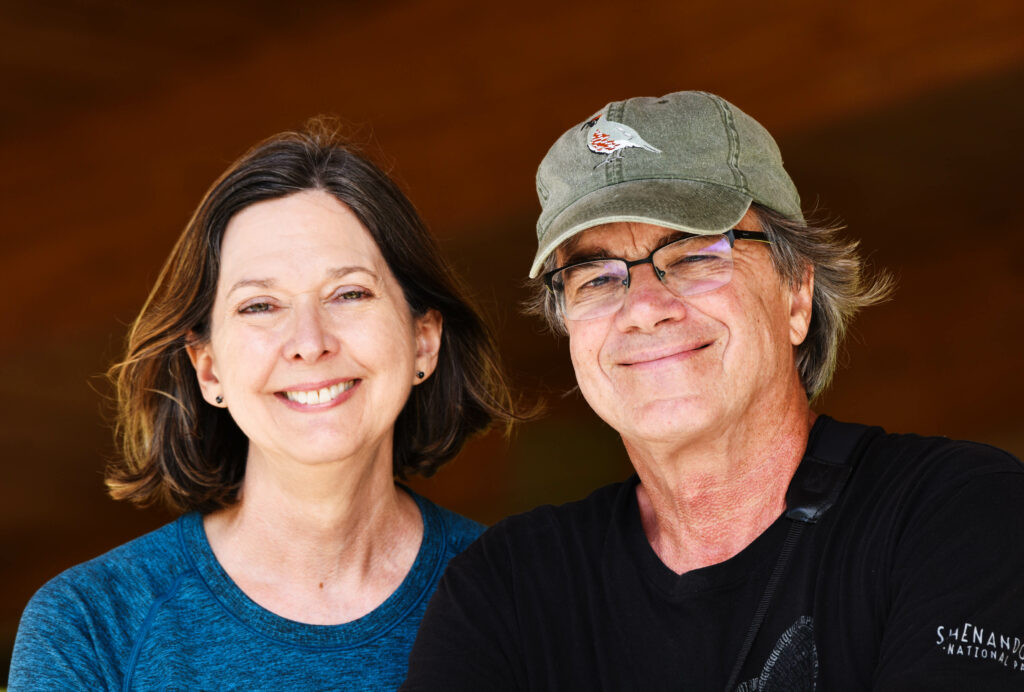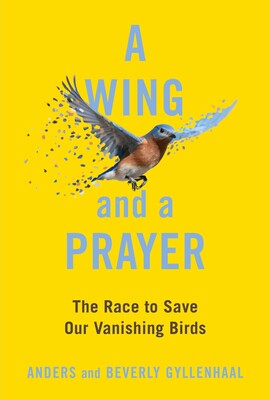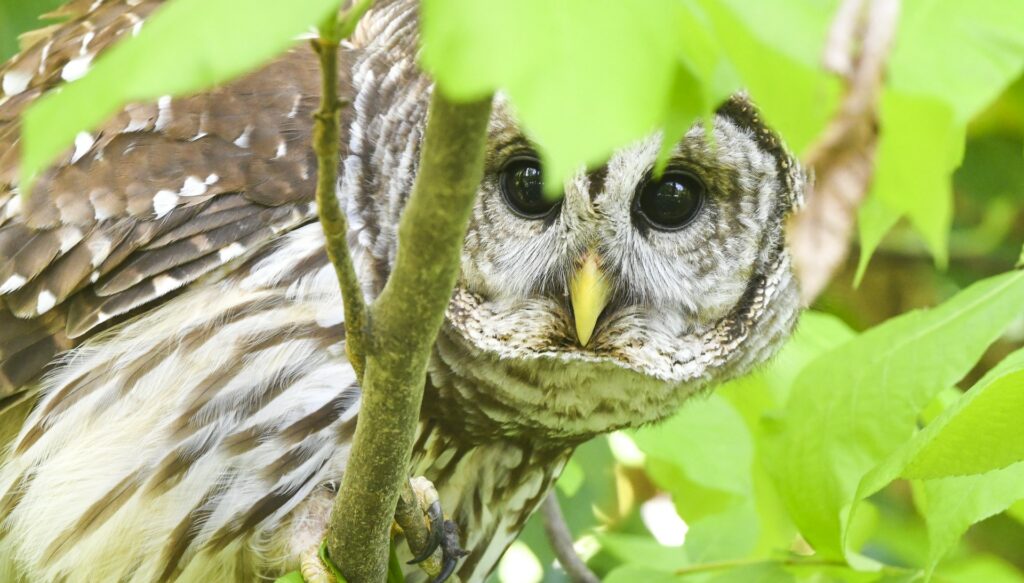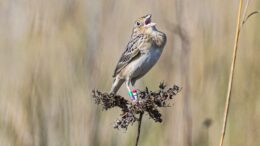In 2019 a staggering study revealed North America had lost nearly 3 billion birds since 1970 — almost 30% of the total population, with declines in both common and rare species. Grassland birds were down more than 50% and shorebirds by around one-third.
The figures floored even the researchers.
It also provided a jolt to avid birders and retired journalists Anders and Beverly Gyllenhaal. They wanted to know what had happened — and what could be done.
To find out the couple took off on a cross-country trip, meeting with 300 experts and other people working to recover birds. They have now chronicled their journey in their new book, A Wing and a Prayer: The Race to Save Our Vanishing Birds.
The Revelator spoke with the Gyllenhaals about who’s saving birds, how technology helps, and what more we need to do.
Why write this book now?
Beverly Gyllenhaal: We’re those people whose hobby took over their lives. Anders is a banjo player and a photographer, and I like to read. We’d go to bluegrass festivals on the weekends, pulling this tiny fiberglass bubble of a trailer. And as we were in these campsites, all of a sudden we started to notice the birds.
Anders started taking pictures and we started identifying them. One thing led to another. Fast forward 10 years, and we’d given up our condo in the city and were immersing ourselves for about half the year in birds.
Then in 2019 when the 3 billion birds report came out, we became aware that approximately one-third of the breeding birds in North America had disappeared. We were surprised, and we were surprised that we were surprised. So we put on our journalists’ hats and started asking ourselves questions.

Anders Gyllenhaal: The interesting thing about the report was that everyone knew that birds and other wildlife were declining, but when you put a specific number on it and really get into the granule details, it has a real power.
There’s so much wonderful writing about birds, but we didn’t see anything that tried to look at the bigger picture: Where is all this going? And is it possible to influence it and alter the direction? So that’s the thing we wanted to try to do with this book.
What kind of impact do you think that report had on the general public?
Beverly: I think that it really helped that it was right before the pandemic, when everyone ended up being at home. People looked out their windows, saw birds and got interested in them. Did it stay in the headlines? Well, if you look at The Washington Post, they have all kinds of bird stories now. The New York Times is writing about birds. So I think it ratcheted up a notch on the hobby list for sure.
Anders: I think the question that was hard to answer, and as it is with so many environmental stories, is whether we’re powerless against this? Is this just too much [to fix]? Part of the answer with birds is that it’s a discrete element of the broader environmental story, where there are in fact myriad things that can be done — and myriad things that aren’t being done that could be done to try to change the situation.
That’s one of the things we’re trying to get across: the stories behind this that can help people understand what they can do in response.
What did you find?
Beverly: It all kind of comes underneath the umbrella of how birds get saved in the United States. How does that happen? And it took us a long time to begin to try to get perspective on that. When we started out we had no idea that politics really plays any part in it, and we didn’t really understand the breadth and depth of the Endangered Species Act.
We talked with more than 300 people to get a fix on how birds do get recovered — and many do. It’s a fascinating story in of itself, and much more complicated than we thought.
How much of that work is government agencies versus nonprofits and foundations?
Anders: It’s this amalgam of different things, and that’s both good and not so good.
We’re at a point now where if there’s going to be real impact, there needs to be more coordination. There needs to be a broader strategy to try to say what can have the most impact?

The system we built really primarily through the 1960s and 70s into the 80s was designed for one period of time, one landscape of birds, which is really focusing chiefly on those that are at the very brink of extinction. That was successful for some period of time, as birds began to enter that sort of final phase.
But now that 50% of species are in some form of decline, there needs to be a new look at how you start trying to have an impact earlier in this regime.
What role is technology playing in this work?
Beverly: You can’t save a bird if you don’t know where it is and where it goes.
When they put tracking backpacks on prothonotary warblers in Louisiana, they thought that it migrated across the Gulf of Mexico and only stopped in the one place where it was going. But they found that this bird would stop for sometimes as long as a week in multiple places and in different countries. That was really important, because it meant that you have got to go into all those places and see what the problems are and try to help fix them.
Anders: In some ways the most interesting piece of technology is allowing people to tune in to birds and other wildlife in ways that really put you close up. Birds are always trying to hide from us. They’re hard to see. The best birds are almost invisible, but when you can see them in cameras and in satellite imagery, that helps us better understand what’s undermining them, and we can also learn about what will better safeguard them.
But it doesn’t do the whole job. There still needs to be concrete work done in the field — figuring out if there’s a pesticide that’s impacting a species in particular, or that there’s a predator that has gotten out of hand. But the technology has enormous power that I think is encouraging.
What did you find that was hopeful?
Anders: The Recovering America’s Wildlife Act is a once-in-a-generation opportunity for birds.
Legislators put forward a really interesting proposal for funding that will probably reach about $1.4 billion a year that will go to birds and other wildlife that aren’t necessarily being funded now. The legislation had kind of stalled in Congress, but it’s [just been] reintroduced.
There’s a lot going on in Congress that makes it hard to produce this kind of legislation, but if you think about the level of support that most people hold for conservation, this is a sound and bipartisan effort.
If you want to ask, is it possible to have a strategic, science-based strategy for helping birds, just look at what has happened on behalf of waterfowl over the last 80 years. They did exactly what was needed, but that needs to be extended to other birds.
Beverly: At the end of the day, that worked because there was funding. Unfortunately, it’s very difficult to make a difference with anything if there is no money behind it.
That’s the frustrating part for me as a birder — and as someone who cares about the air I breathe and the water I drink. It’s crazy that we’re not willing to spend what’s needed to help save birds, because we can do it.
![]()
Previously in The Revelator:


